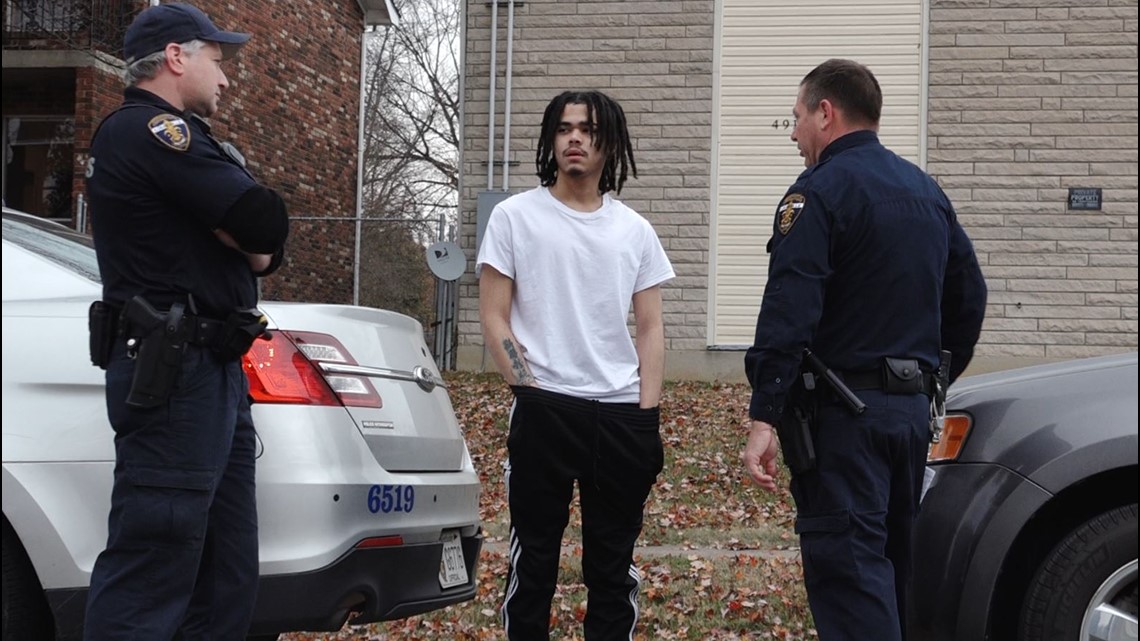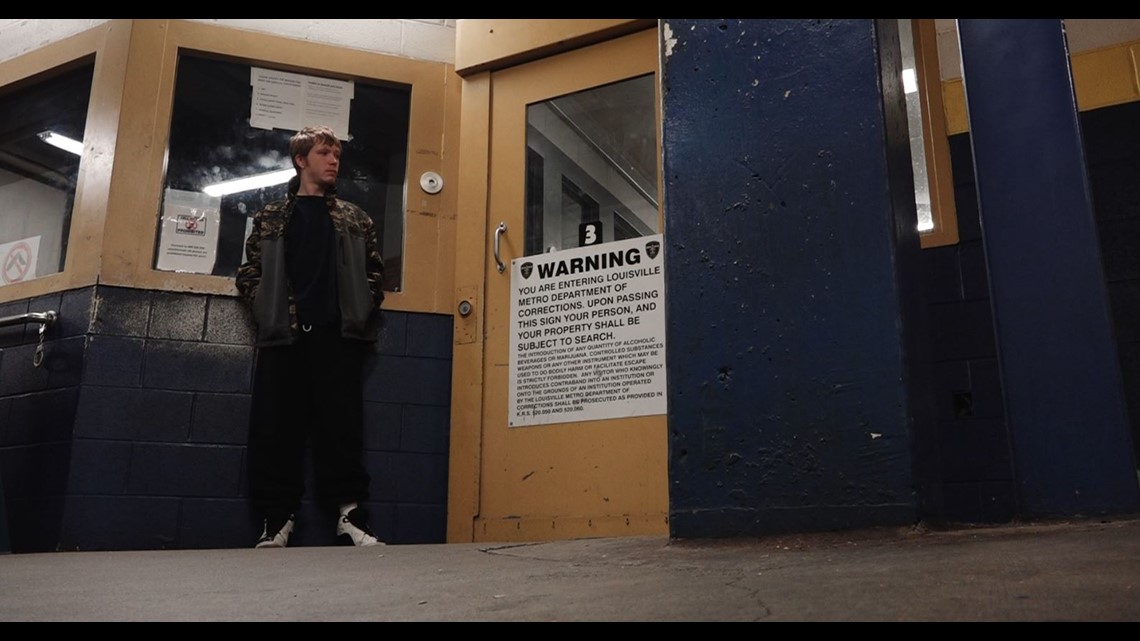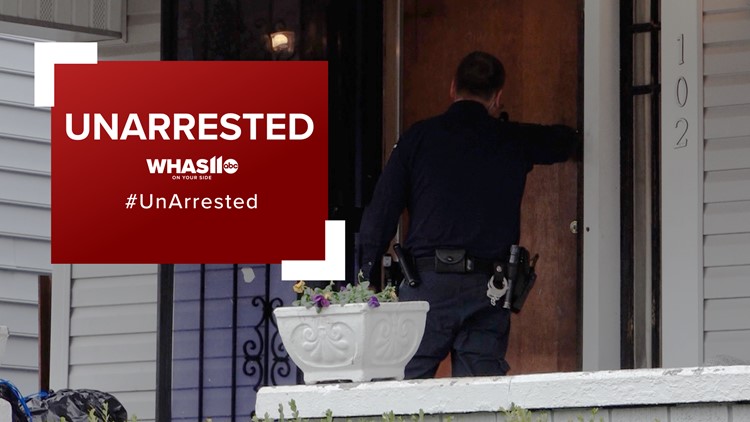LOUISVILLE (WHAS11) -- At Louisville Metro Department of Corrections keeping tabs on the incarcerated is more than full-time, it's all the time.
“They have to have a notary form,” Thomas Woods with the Louisville Metro Department of Corrections said.
He checks on inmates in jail as well as the hundreds outside Metro Corrections in the Home Incarceration Program or also known as HIP.
“We're going to do a home check on these two individuals,” Woods said.
For Officer Thomas Woods and his partner Joseph Alexander jail is spread out throughout Louisville.
There are 500 to 800 participants in Louisville’s house arrest program at any given time. Their cells are constructed by the walls, windows, and a ceiling, there are no bars.
“We're just making sure that they're following all the rules,” Woods said. “We've had some very volatile situations."
The inmates aren't really locked up because they have keys to the locks.
Woods said some of the houses they have checked had explosives in them, like pipe bombs.
Even accused violent offenders routinely participate in Louisville’s Home Incarceration Program.
“No, I don't look like no violent person,” Thomas Gage, a 19-year-old on house arrest, said.


Nelson pleaded guilty to shooting a guy near the Big Four Bridge, a week before Thunder Over Louisville. He is charged with first-degree assault.
“You can answer the phone, you feel me?” Nelson said.
Instead of being behind bars, he is enjoying all the freedoms, while awaiting sentencing.
“You see, I just woke up when I wanted to,” Nelson said. “I can eat some cereal. I can eat whatever I want.”
Nelson is on house arrest thanks to Judge Darryl Lavery.
“That's my man, you hear me,” Nelson said, with a laugh. “I ain't got no problem with that standing up there, he got me out so I'm going to keep that right there. Judge Lavery, he should be the next judge.”
Judge Lavery was voted out two weeks ago, and Judge Sean Delahanty also lost re-election.
“There's a political consequence for this job,” Delahanty, a judge for District Court Division 6, said.
Delahanty has taken a lot of heat.
“Even though he has confessed to shooting him, there are defenses,” Delahanty said.
Granting Deandre Williams house arrest in August 2017, even though police charged him with murder.
“Well, it's a necessity, it's a necessity,” Delahanty said.
There are often not enough beds to go around in Louisville jails.
“We have to use finite jail space for people that we're afraid of, and not people we're mad at,” Mark Bolton, Louisville Metro Department of Corrections Director, said.
Thirty-two-thousand inmates are booked into corrections per year, in 2017, according to this Office of Performance Improvement report. The court ordered more than 7,000 on H.I.P. with about 6,100 placed on house arrest.
“We don't get to pick and choose,” Bolton said.
The report says a small percentage of those are accused of a big crime, murder. Ten accused murderers were allowed to go home, including Deandre Williams, despite an original charge of murder. And then, one case of an inmate committing murder while on house arrest.
Just like on Aug. 5, 2017.
“I'm being bullied by the big guy, man. I just had to shoot him, man. He's on the ground right now,” Justin Curry said.
On the 911 call, Curry proceeds to tell the operator he was on home incarceration at the time of the shooting.
PHOTOS: Files from Justin Curry's case
Curry didn't run, he waited for officers to arrive at the shooting scene at a Newburg apartment.
But he said he tried to tell corrections about the situation before the shooting.
“Officers came by this morning and I told them, I'm like, I'm on H.I.P. I can't be here, you all need to take me. They wouldn't take me nowhere, so,” Curry said.
James Wood, on the other hand, has been on the run since October. More specifically, by cutting off his ankle monitor and running away, according to Louisville Metro Police. He did that within two hours of leaving court.
Officer Nicolai Jilek, the President of the River City F.O.P. Lodge 614, said he would never have put Wood on house arrest.
Jilek is quite familiar with Wood.
“This is somebody who now has an extra reason to run,” Jilek said.
According to a September 2017 warrant, Wood threatened to kill his girlfriend, held her prisoner, and forced sex on her.
She eventually managed to escape by jumping out of a second-floor window, breaking her leg.
When police got to his house, they found a hidden handgun, cash, and 5 pounds of pure fentanyl.


Cops also seized five luxury cars.
Wood, considered to be a serious criminal by Jilek, time and time again was placed on house arrest. It took a sixth time for him to become a federal fugitive.
“I think anybody could have foreseen that. A very high likelihood that, that would happen,” Jilek said.
Jilek said judges should use the “common sense test” and keep those charged with violent crimes behind bars.
“Anyone that strikes terror in people,” Jilek said.
It gives them less of a chance to take off before trial, for the community's safety, but also to help protect those who protect and serve.
“You gotta look for the guy again and, also, this guy now knows what's coming to him,” Jilek said.
Cost is a factor in the Home Incarceration Program.
“Really comes down to saving money,” Jilek said. “Cutting folks loose, putting them on H.I.P., just really for saving money.”
Metro Corrections points out that jailing an inmate is at least $72 per day, while one at home is less than half that amount.
“Is right around $10 per day, so there's pretty dramatic cost difference,” Bolton said.
“Obviously, it's cost effective to do this,” Bolton said. “Yeah, that's not the reason we do it.”
Bolton claims the purpose is to get inmates back to work, back with family.
“I think that's a win-win for folks,” Bolton said.
Another chance at being law-abiding.
“The majority of those people have been successful,” Bolton said.
VIDEO: Is home incarceration safe?
There’s no drinking and no drugs while on house arrest, it’s a zero-tolerance policy.
Break the rules and it is back to jail.
That's what happened to Sean McDaniel. He was on house arrest for three felony counts of wanton endangerment.


McDaniel was back on the inside after just three-weeks out.
“Yeah, I smoke weed, I'm a stoner. That's all I do,” McDaniel, a house arrest violator, said.
He is behind bars until he faces the judge another time. He is in a cell, taking up space in a jail already struggling to find more space.
“It was a good program until I got locked back up," McDaniel said.
This is part four of a four-part series from the WHAS11 iTeam called UnArrested.
►Contact reporter John Charlton at jcharlton@whas11.com. Follow him on Twitter (@JCharltonNews) and Facebook.



